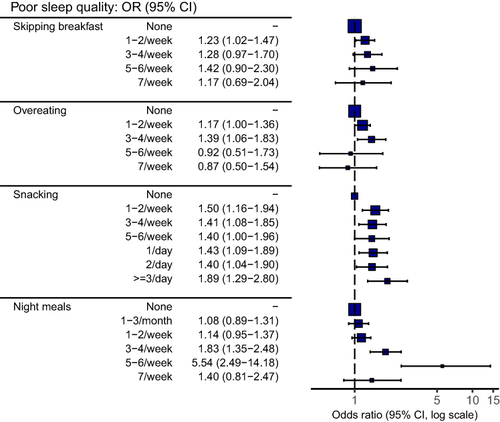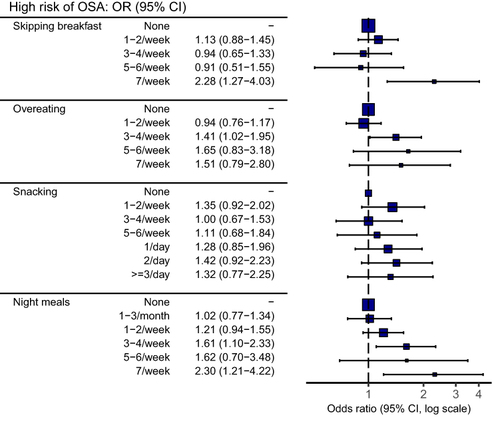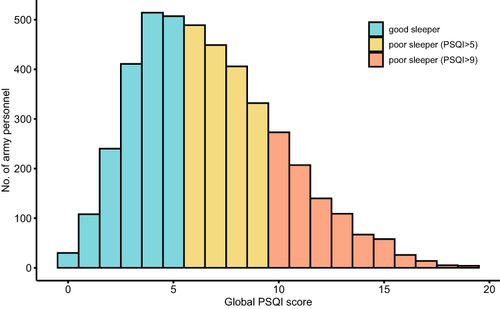Figures & data
Table 1 Characteristics of Military Service Members
Table 2 Multivariable Logistic Regression of Dietary Behaviors for Poor Sleep Quality (PSQI > 5)
Table 3 Multivariable Logistic Regression of Dietary Behaviors for Poor Sleep Quality (PSQI > 9)
Figure 2 Forest plot of the odds ratios of dietary behaviors on poor sleep quality. Adjusted odds ratios and 95% confidence intervals (CI) were calculated in the multivariable logistic model using demographic, lifestyle, and occupational factors as the covariates. The size of the square represents the number of participants in each item.

Table 4 Multivariable Logistic Regression of Dietary Behaviors for High Risk of OSA
Figure 3 Forest plot of the odds ratios of dietary behaviors on high risk of obstructive sleep apnea (OSA). Adjusted odds ratios and 95% confidence interval (CI) were calculated in the multivariable logistic model using demographic, lifestyle, and occupational factors as the covariates. The size of the square represents the number of participants in each item.


